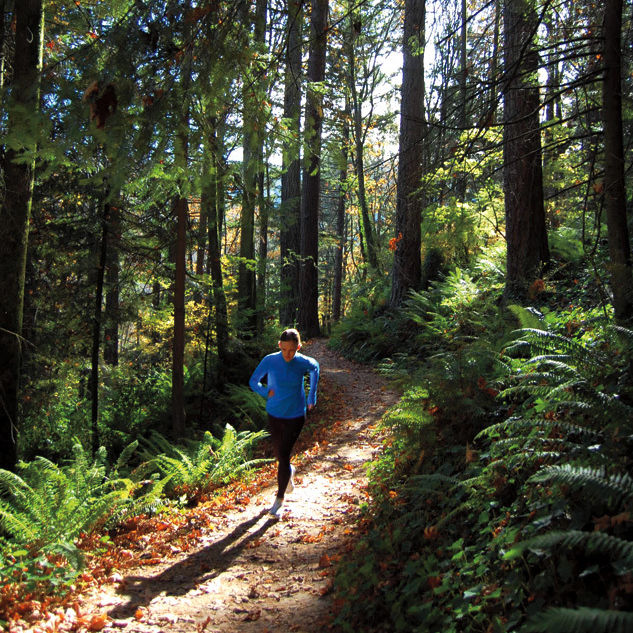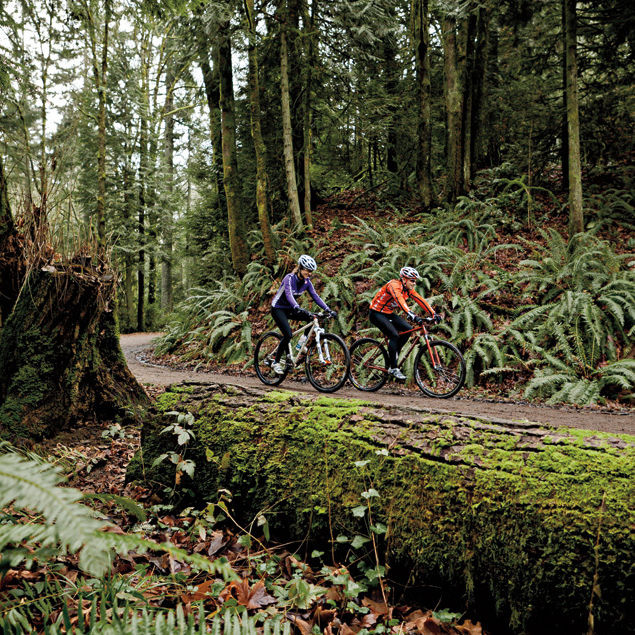Forest Park Guide: The New Face of Forest Park
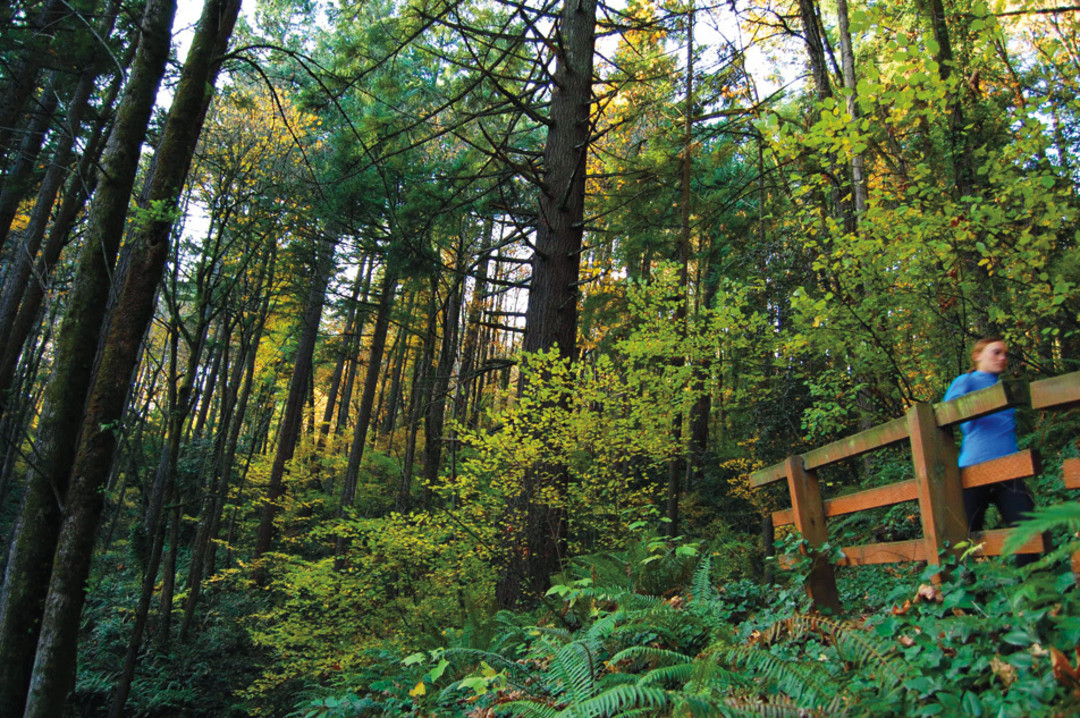
Designated as a National Recreation Trail, the Wildwood Trail in Forest Park stretches 30 miles from Washington Park to NW Newberry Road.
Image: Ryan Moore
FOREST PARK’S NEW RANGER stands barely north of five feet tall with thinning red hair and a pair of square tortoiseshell glasses. Smokey Bear he is not. But this summer, as legions of Portlanders fan outward to commune with nature, Bob McCoy will be a similarly potent symbol as the first-ever full-time guide, guard, and all-around go-to guy for Forest Park.
McCoy’s daily presence in the woods (the city promoted him from a seasonal ranger to full-time in September) is meant to help solve one of Forest Park’s most elemental yet vexing challenges: a vacuum of information. Despite its status as one of the largest city-owned wilderness areas in the country—a 5,100-acre, fir-studded blanket that cradles some 80 miles of trails and more than 60 native species of mammals and 100 species of birds, all within yodeling distance of a city of more than 500,000 people—Forest Park has some glaring omissions. There is no park visitor center. No central trailhead. No singular place to a grab a brochure. The few permanent metal trail maps that are scattered inside the park are old, faded, and hard to decipher. Trails are signed, but it’s not always clear who has a right to use them, leading to clashes between the park’s myriad user groups: mountain bikers, hikers, runners, equestrians, and dog walkers. And until McCoy started walking the beat, there was nobody to provide a compass, or a referee’s whistle.
True, Portland has always employed a stable of a 10 or so seasonal urban rangers. But these positions had to be split among dozens of city parks, so none could devote the kind of day-in-day-out attention that a wilderness on such a vast scale demands, much less effectively enforce any rules or educate visitors about their impact on the park.
McCoy now patrols up to 15 miles a day in the park—by foot and mountain bike—logging user stats and wildlife sightings, and fielding questions about everything from what trail to hike to the complexities of the park’s watersheds. But with rule-enforcing powers that include handing out citations to owners of off-leash dogs, he is fully aware that not every park lover will welcome his badge-carrying status. “I’ll probably piss off half the people I meet,” he chuckles.
A former Philadelphia-based editor and publisher who decided to switch career paths when his wife wanted to relocate to her native Portland, McCoy says he’s no stranger to conflict. “I used to deal with authors,” he says, “and they’re the most difficult people you’ll meet.”
If ever Forest Park needed a smooth-talking Smokey, it’s now. In 2010, the park suffered a series of sieges both physical and political. First, in February a rogue mountain bike trail was hacked out of the woods in an area north of Germantown Road, in the park’s pristine North Management Unit, an area frequented by migratory elk. The discovery effectively soured the public and elected officials to even law-abiding mountain bikers like members of the Northwest Trail Alliance, a mountain bike advocacy group that had been in the process of negotiating with the city to add more singletrack trails to Forest Park. Two months later, a Linfield College professor released a study that concluded that young trees were dying in the park at an alarming rate.
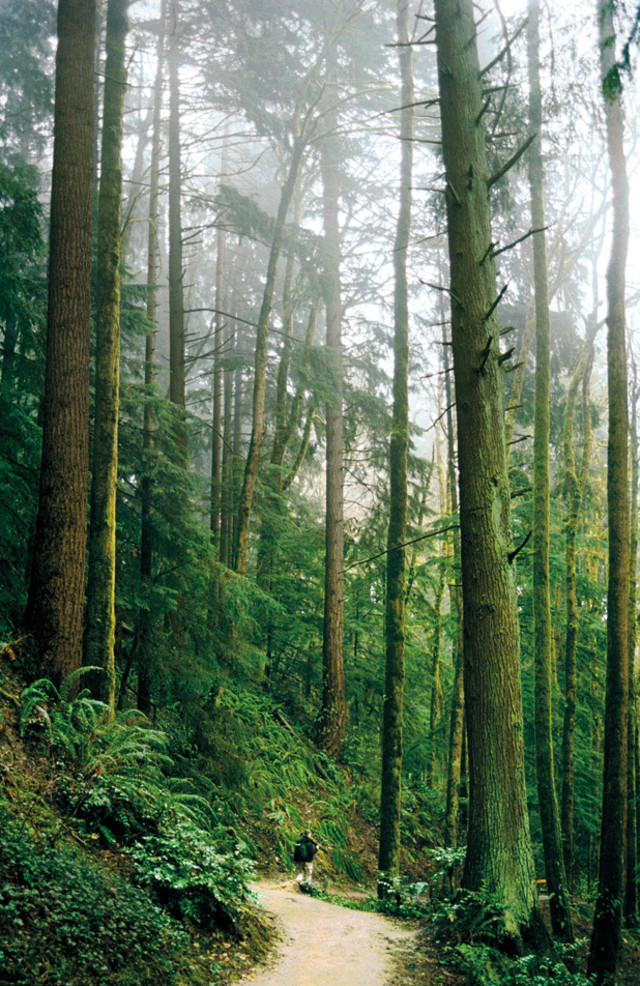
The Wildwood Trail above NW Cornell Road and the Audubon Society of Portland
Image: Danielle Hughson
Then the City Club of Portland sank its teeth into the park. Last May the 95-year-old group, whose early members helped create the park, issued a 58-page, humdinger-packed report dubbed, “Forest Park: A Call to Action.” Among its more incendiary revelations was the fact that despite its size—some 47 percent of all Portland Parks & Recreation lands—Forest Park received less than 1 percent of the city’s $99.5 million park budget, roughly $500,000 in 2010. The report jabbed especially hard at the parks bureau’s failure to follow its own park management plan, a blueprint crafted in 1995. The plan called for, among other things, a park user survey, strategies to combat invasive species such as English ivy, which has infested up to 30 percent of the park, and a full-time, paid ranger. Little had been done. Some clubbers were so rankled that they proposed the park should be taken over by Metro. To cap the calamitous year, Oregon Public Broadcasting’s popular Oregon Field Guide program aired a special on Forest Park that cast a seesaw view. The upside: Forest Park is a still a gem. The downside: we’re rapidly loving it to death.
“Have you heard the expression, ‘We went to a fight, and a hockey game broke out’? I think a similar thing happened here,” says Nick Fish, the city commissioner in charge of parks. “[In 2009] we began a community conversation about whether there was room for off-road cycling in this jewel called Forest Park. And through that sometimes painful process, we heard from the community that the city needed to do a better job as stewards. And that’s my no. 1 goal—Forest Park has risen to the top of the list.”
Indeed, Fish and crew have been busy. In addition to bringing on McCoy, the city completed a recreational user study with Portland State University. In January, the parks department released a Desired Future Condition Report to help guide park restoration efforts during the next 25 years with actions like a vegetation-monitoring program slated to begin this summer with the help of Forest Park Conservancy, an advocacy group the city has officially partnered with to tend to the park. Fish has also earmarked $80,000 for a yearlong wildlife study in 2012, an endeavor that could help foster a better understanding of Forest Park’s strategic connection to the Coast Range.
The efforts have not gone unnoticed. “I feel strongly that Portland has made a commitment [to Forest Park],” says Mike Houck, the director of Portland’s Urban Greenspaces Institute and noted champion of natural areas like the popular Oaks Bottom Wildlife Refuge, which, he notes, the city transformed from a one-time “tsunami” of Himalayan blackberries. “But it’s going to take many years to achieve the kind of conditions we’d like to see 50 to 100 years from now in Forest Park.”
Meanwhile, McCoy hopes to reinforce his ranks by deputizing members of a volunteer park ambassador program, essentially a neighborhood watch for the park.
Still, Portland’s spectacled steward of Forest Park remains realistic about his own effect. “This is a big forest, and I’m just a little guy,” he says. “I can’t change people. But I can help shape an experience in the park. And I can set them on the right path.”
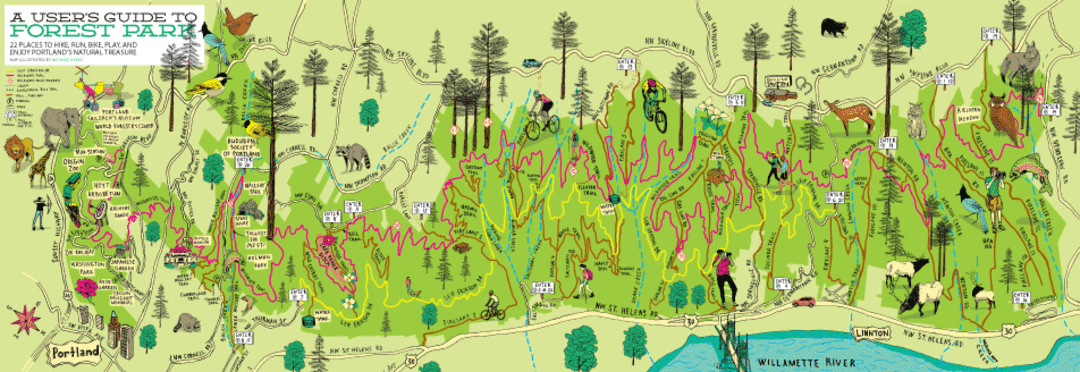
Image: Michael Byers
Download a printable version of a map of Forest Park and a guide to all the hikes, runs, and bikes.
